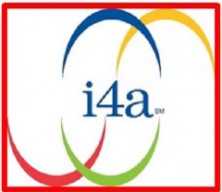 Strengthening data intelligence on the value of services provided by Area Agencies on Aging (AAA) is imperative, according to one of the findings published in a newly released report from the National Association of Area Agencies on Aging (n4a). To better understand the types of data collected, and how it is being used to measure the value of services provided by the aging network, n4a surveyed 137 AAAs from across the United States and interviewed four AAAs for the report. The report found that data has been successful in helping AAAs and healthcare systems establish partnerships. Additionally, challenges in technological infrastructure remain a barrier to growth.
Strengthening data intelligence on the value of services provided by Area Agencies on Aging (AAA) is imperative, according to one of the findings published in a newly released report from the National Association of Area Agencies on Aging (n4a). To better understand the types of data collected, and how it is being used to measure the value of services provided by the aging network, n4a surveyed 137 AAAs from across the United States and interviewed four AAAs for the report. The report found that data has been successful in helping AAAs and healthcare systems establish partnerships. Additionally, challenges in technological infrastructure remain a barrier to growth.
The n4a report highlighted how the aging network is using data to partner with healthcare systems to improve care and to reduce costs. Over one-third of the respondents indicated that they have successfully contracted services with healthcare entities. Most commonly, case management and care transition services were the primary services provided within those arrangements. Area Agencies on Aging also reported similar services being funded by Managed Care Organizations (MCOs) and Medicare/Medicaid dual plans.
Healthcare and aging network partnerships were highlighted in the n4a report. In![]() Washington, it was estimated that $67 million in Medicare cost savings was realized through care coordination with its aging network. An Ohio AAA reduced home repair costs to Medicaid by 45% through its services. Additionally, the Virginia Commonwealth University Health System reported readmission rates decreased from 15% to 9% through its care transitions program that partnered with a Virginia AAA. Iowa’s AAAs have developed and continued to strengthen their working relationships with healthcare providers for home and community-based supports and services.
Washington, it was estimated that $67 million in Medicare cost savings was realized through care coordination with its aging network. An Ohio AAA reduced home repair costs to Medicaid by 45% through its services. Additionally, the Virginia Commonwealth University Health System reported readmission rates decreased from 15% to 9% through its care transitions program that partnered with a Virginia AAA. Iowa’s AAAs have developed and continued to strengthen their working relationships with healthcare providers for home and community-based supports and services.
Data used in establishing the value AAA services bring to healthcare partnerships, as well as service purchasers (e.g., MCOs), include cost-saving measures and return on investment (ROI) measures. The ROI is the profit relative to the invested cost. As AAAs strengthen their ability to identify program costs and savings realized in implementing programs, so too are they challenged to strengthen their information technology (IT) infrastructure.
![]() One of the primary barriers to AAAs enhancing their IT infrastructures is lack of adequate funding and lack of human resources. The n4a report cited the initial cost outlay for IT and software is a significant barrier to AAAs being able to collect the data necessary to effectively measure value data. A lack of data analysts who can establish measures, analyze results, and report findings is also a barrier to AAAs as such skill sets are not typically part of the AAA funding and staffing model. But because such data and reporting is so important in establishing the value of AAA services, there has been an increased interest in identifying potential employees with these skills sets.
One of the primary barriers to AAAs enhancing their IT infrastructures is lack of adequate funding and lack of human resources. The n4a report cited the initial cost outlay for IT and software is a significant barrier to AAAs being able to collect the data necessary to effectively measure value data. A lack of data analysts who can establish measures, analyze results, and report findings is also a barrier to AAAs as such skill sets are not typically part of the AAA funding and staffing model. But because such data and reporting is so important in establishing the value of AAA services, there has been an increased interest in identifying potential employees with these skills sets.
The n4a report identifies the successes of AAAs who have been able to utilize value-based data to assist in establishing partnerships and increasing access to service funding. Continued efforts to strengthen the IT and human resource infrastructure will be needed for the entire aging network to be able to fully realize the potential the value data may bring to their respective organizations.

